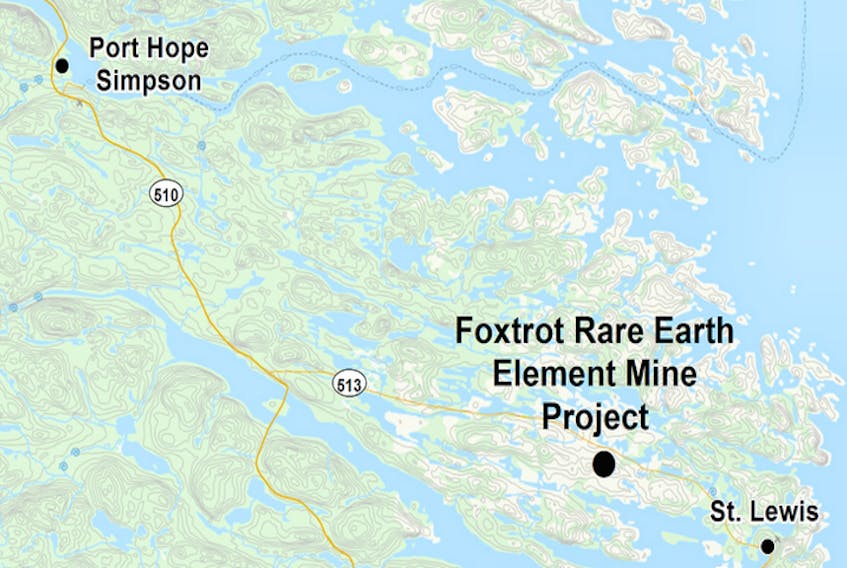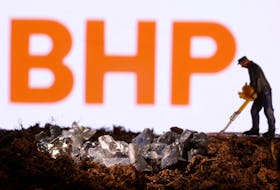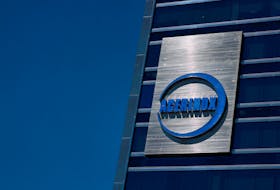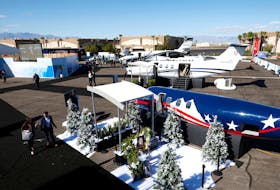ST. LEWIS, N.L.
NEWFOUNDLAND AND LABRADOR
CANADA
Search Minerals, a Vancouver-based mining company assessing a deposit it calls “Deep Fox” of critical rare earth elements (CREES) two kilometres from St. Lewis, has wrapped up its summer drilling program and is encouraged by what geologists saw.
In 2016, Search released its preliminary economic assessment of a deposit it calls “Foxtrot,” which is 12 kilometres from St. Lewis. The company believes it is a mineable resource. A mine plan has been drawn up and an environmental assessment is underway.
With this summer’s drilling program, Search hopes it can outline a second economically-viable resource that will enhance its ability to get to a bankable feasibility study, the next step in mine development.
“What we’re trying to do is validate another resource,” Search CEO Greg Andrews told the Northern Pen on Aug. 27. “We have the economics on what one resource looks like with Foxtrot, and it would be quite compelling to have two resources. Really, our goal is to change our project from Foxtrot, which is a 14-year-life mine, eight open pit and six underground, to extending the life of the project with Deep Fox, providing the assay results and drill results confirm all this, we would have a project that would be generational in terms of plus-30 years.”
There are still a lot of hoops to jump through, however, not the least of which is engagement with the southern Inuit.
George Russell, NunatuKavut natural resources and environment manager, says they have had very open communications with the company and are working diligently to keep the communities informed and involved.
Although there are concerns regarding the safety of land, water, flora and fauna, he says people are “cautiously optimistic” about the economic prospects from the project.
says they are working with the company and provincial and federal governments to ensure that environmental concerns are addressed.
Scientific results from this summer’s drill samples will not be available until September, but results from preliminary drilling released in March showed concentrations of Yttrium, Neodymium, Praseodymium, Terbium and Dyprosium at Deep Fox even higher than those at Foxtrot.
A company press release states that visual signs of the minerals they are looking for are present in all of the drill holes. That encouraging information, combined with good weather and efficient drilling, allowed the team to complete an additional 427 metres of drilling on top of the 1,500 metres it had originally planned to do this year.
CREEs are elements that are used by the electronics, electric-hybrid car and sustainable energy industries.
Neodymium, for example, is use to make powerful magnets essential to miniaturizing loudspeakers and hard drives for use in smart phones and the manufacture of green technology such as wind turbines and electric cars.
The upsurge in demand from these industries is driving the market price for rare earth elements up and that has Andrews excited about developing both deposits.
“We have continued to advance our district during low rare earth element prices and are now poised to benefit with the renewed interest in the sector led by government initiatives for renewable energy, electrification of vehicles and increasing prices of our key rare earth elements,” says the company’s CEO.
Andrews added it goes beyond the two St. Lewis resources. The entire district is 70 kilometres long and Search currently has another sampling program going on near Port Hope Simpson and has identified up to 20 other promising areas.
Andrews is also excited about working in Newfoundland and Labrador generally and in the St. Lewis area specifically, citing the “great infrastructure” of Hwy 513 and the year-round deep water port.
“That really helps to support some of the initial costs to build a facility, having these infrastructures somewhat in place,” he says. “Yes, we’d have to upgrade the power, potentially roads and move things, but having the basics there and especially a workforce around in St. Lewis to Port Hope Simpson to Mary’s Harbour, Cartwright, all those areas.”









